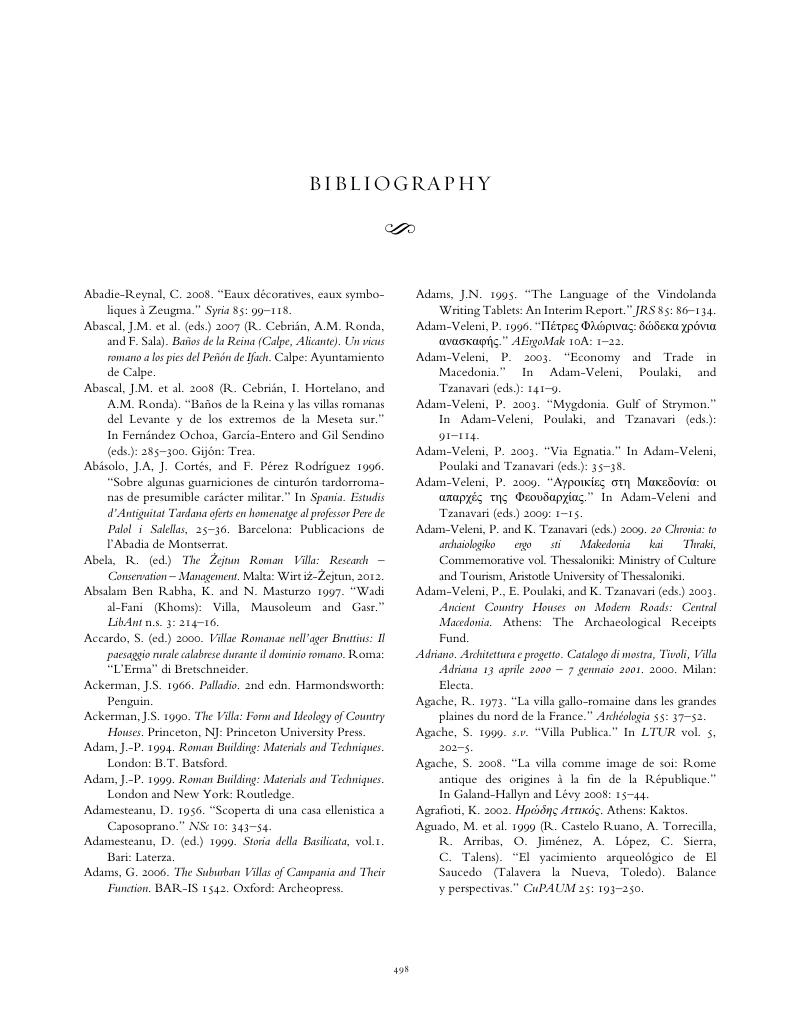Book contents
- The Roman Villa in the Mediterranean Basin
- The Roman Villa in the Mediterranean Basin
- Copyright page
- Dedication
- Contents
- Illustrations and Maps
- Color plates
- Contributors
- Acknowledgments
- Abbreviations
- Introduction
- 1 The Roman Villa: An Overview
- 2 The Roman Villa
- Part I Roman Villas on or Near the Bay of Naples and Maritime Villas
- Part II Roman Villas in the Mediterranean
- Part III Roman Villas
- Part IV Roman Villas
- Glossary
- Bibliography
- Index Locorum
- Index Topographicum
- Index Verborum
- References
Bibliography
Published online by Cambridge University Press: 19 July 2018
- The Roman Villa in the Mediterranean Basin
- The Roman Villa in the Mediterranean Basin
- Copyright page
- Dedication
- Contents
- Illustrations and Maps
- Color plates
- Contributors
- Acknowledgments
- Abbreviations
- Introduction
- 1 The Roman Villa: An Overview
- 2 The Roman Villa
- Part I Roman Villas on or Near the Bay of Naples and Maritime Villas
- Part II Roman Villas in the Mediterranean
- Part III Roman Villas
- Part IV Roman Villas
- Glossary
- Bibliography
- Index Locorum
- Index Topographicum
- Index Verborum
- References
Summary

- Type
- Chapter
- Information
- The Roman Villa in the Mediterranean BasinLate Republic to Late Antiquity, pp. 498 - 571Publisher: Cambridge University PressPrint publication year: 2018



